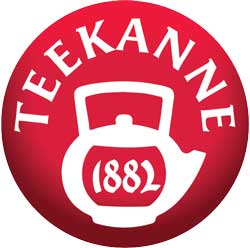Supply Chain Planning


With smart control of their global and local rough and detailed planning processes, they can initiate countermeasures and mitigate the effects. Supply chains often pose the greatest challenges for companies in the current climate. For example, when container ships fail to arrive due to an accident or economic sanctions prevent urgently needed assemblies from being delivered. How does a prospering company achieve the necessary transparency to be able to proactively take countermeasures? Continuously digitally networked solutions often help here. Although this cannot solve disruptions in the transport of goods, it may be possible to mitigate the effects on production in the company through high transparency by cleverly redirecting the flow of goods. This requires well-coordinated, transparent rough and detailed planning processes that range from sales planning, purchasing, production and inventory to distribution and optimized machine allocation.
The calm is over
The days when everything ran like clockwork are a thing of the past. Aging enterprise resource planning systems cannot meet the new challenges because they are very limited locally and do not provide a detailed view of the international flow of goods and the financial situation of the entire company. The new solutions from SAP allow a holistic view of the relevant business processes. Starting with sales planning, through logistics and production, to delivery to the customer - with optimal modeling even in near real time. The key components are SAP Integrated Business Planning (IBP) for rough-cut planning of production and distribution, and Production Planning and Detailed Scheduling (PP/DS) for detailed planning. With both solutions, it is possible to trace an almost seamless path of the products from goods receipt through finishing to the customer.
Direct the flow of goods
Rough planning with IBP offers the big picture in SCM. The SaaS solution creates transparency about requirements, inventories and capacities along the supply chain. Innovative forecasting methods and planning algorithms for sales planning, production, distribution and procurement support targeted inventory optimization and thus ensure delivery readiness across the entire value network. Simulations of various planning scenarios also help users to maintain an overview of the consequences of changes and decision alternatives as part of what-if analyses.
Since IBP is decoupled from the on-premises world due to its cloud architecture, there is not only no need to import large software packages, but also no need to observe special release statuses. The reason: SAP updates the SaaS solution automatically and permanently supplies the solution with function updates. This makes maintenance of the solution very convenient and reduces the workload on corporate IT. Process and data integration with external systems is ensured by an ERP add-on for SAP ERP/ECC 6.0 and S/4 Hana as well as various interfaces.
Four modules, one dashboard
IBP is basically made up of four modules - IBP for Demand, IBP for Response and Supply, IBP for Sales and Operations, and IBP for Inventory. The Supply Chain Control Tower towers above them. It functions as a kind of central dashboard that helps users keep track of existing data, identify disruptions early and prioritize them properly. IBP already provides for exception management and external stakeholder engagement capabilities. With Supply Chain Control Tower, companies also get extensive alert monitoring capabilities, case management for handling alerts, and integration with SAP Ariba, a cloud-based B2B marketplace for buyers and suppliers. This increases transparency; it also optimizes performance management with standardized and customer-specific metrics and event management with case and task processing.
Globalization in focus
Sales planning is one of the biggest challenges in supply chain management due to seasonal fluctuations, more flexible product ranges and more demanding customers. IBP for Demand provides more robustness in all subsequent planning steps by accurately forecasting demand and determining sales volumes in the short to medium term. This demand forecast is based on sophisticated statistical methods, which in turn provide the basis for procurement, inventory and production planning. As part of the forecasting process, past data is processed and cleansed - forming the foundation for precise sales planning. Demand sensing also contributes to precision by enabling information or current data from supply chains to be used very quickly. In addition, IBP can be used to reconcile global and local planning. Consilio customer Rehau, for example, relies on this module because of the required forecasting algorithms and PLM functionalities.
Customer needs in view
Coordinated response and supply planning is the prerequisite for being able to react to fluctuating customer requirements and to disruptions in the network. The focus is on the processes for tactical, operational and reactive supply planning. These are supported in IBP for Response and Supply by high-performance as well as cost- and rule-based processes and are time series-based or order-based, depending on the time horizon. Tactical supply planning is time-series based and enables infinite and finite production and distribution plans for medium- to long-term planning of quantities, capacities, costs and sales. In addition, capacity expansion, component substitution, automatic product mix adjustment, and multi-sourcing enable planning responses to changes and disruptions in the network. This functionality was an important decision criterion for Teekanne, for example, to implement IBP in order to realize rough time series-based planning for its supply chain. Operational supply planning is order-based and suitable for finite and daily planning of orders for production, purchasing and stock transfer. The planning is based on rule-based sales order and forecast prioritization. Based on this, IBP transfers confirmations to the ERP, whereupon short-term distribution orders can be created. Reactive response planning is also order-based and is suitable for flexible responses to changes in demand and the supply chain by rescheduling production, distribution and procurement orders.
What if ...?
SAP IBP for Sales and Operations provides integrated processes for synchronizing sales planning with supply and financial planning. In addition, other areas such as research and development, procurement or external stakeholders can be integrated. IBP for Sales and Operations enables continuous exchange through weekly or monthly review meetings. This allows reconciliations for the entire supply chain to be made on a uniform data basis (single source of truth). Integrated Excel planning views and Fiori dashboards also ensure uniform and intuitive user guidance and enable optimal use of relevant functions such as simple statistical demand planning, infinite supply planning or opportunity and risk planning. If required, functions from other IBP modules can also be integrated or simulations performed, for example on order quantities or shift operations.

The warehouse under control
It is a major challenge for companies to keep inventory levels close to demand and to keep customers satisfied. IBP for Inventory determines how much inventory should be held at which points in the supply chain to both serve customers and minimize inventory costs. The dynamic approach of the module enables planners to optimize the inventory of the entire supply chain and to minimize forecast errors, demand fluctuations and procurement uncertainties.
Plan inventories
IBP for Demand-driven Replenishment allows planning based on actual customer demand using strategically decoupled material flows to overcome supply chain disruptions. Inherent dynamic adjustments of inventory buffers protect the material flow and regulate the capital commitment. In this way, inventory buffers can be planned in the best possible way.
When it comes to the details
Detailed planning processes cannot be mapped realistically with IBP, since its algorithms and within the framework of an S&OP process (Sales and Operations Planning) focus on a profitable allocation of capacities and quantities. This is where the integrated detailed planning SAP Embedded PP/DS comes into play (ePP/DS). It enables coordinated, smoothed and feasible production plans across plants and MRP levels, thereby reducing lead times throughout the production chain. Since detailed planning simultaneously takes into account all production constraints such as machine, personnel and production resource capacities and availability, PP/DS enables setup-optimized planning and optimum utilization of resources. Automotive supplier and Consilio customer Dr. Schneider, for example, uses the advantages of PP/DS to optimize its coupled production in injection molding in order to achieve a high level of transparency in production.
The SAP standard is extended by the Consilio add-on PP/DS Analytics. It additionally enables access to the live data of PP/DS data and thus allows a dynamic, KPI-based evaluation of the planning quality with tools such as Embedded Analytics.

The full potential
Coarse and detailed planning address different planning problems, levels and horizons. Therefore, it is normally wrong to assume that all planning problems can be solved with only one of the approaches or with only one of the two solutions IBP or PP/DS. Especially from a supply chain point of view, it is not useful to try to solve all planning problems with only one detailed planning tool like PP/DS, because the focus of a future-oriented detailed planning is to make detailed decisions in the short term. The same is true the other way around. IBP scores particularly well in rough-cut planning because it provides all the tools needed to plan a profitable allocation of capacities and sales quantities such as plants, warehouses, production resources, product groups, customers, suppliers and periods - but it cannot be used to plan detailed planning in any meaningful way. This leads to the following conclusion: If you want to fully exploit the planning potential, combine IBP and PP/DS and ensure efficient planning of your supply chain and production with coordinated rough and detailed planning processes - so-called Synchronized Planning.
Food industry
The Dr. Schneider group of companies is one of the world market leaders in the automotive premium sector in the field of ventilation systems and window frame trims.
In production, Dr. Schneider relies on joint production. This means that special tools are used to manufacture several products simultaneously from the same material. As a result, when product A is planned, product B is also planned or discarded at the same time. However, the company wanted this process to be mapped with separate orders. In order to make the costs more transparent, the co-production should not be handled via one order but via several orders. Otherwise, the costs would also be reported in Controlling via one order instead of separate orders. With this method, the different scrap quantities become visible and can thus be mapped in the order in order to separately consider and define costs and scrap quantities for individual products. Together with Consilio, Dr. Schneider implemented the requirements in PP/DS.

Plastics industry
Rehau, a leading polymer specialist in the fields of water management, energy-efficient construction, renewable energies, mobility and future living, is seeking Consilio's support for the introduction of its cloud-based IBP planning software.
By introducing IBP, the polymer specialist Rehau expects future-proof and flexible planning of the supply chain, increased efficiency of the planning processes, optimized use of available resources and lower maintenance costs for IT.
During the implementation by Consilio, the sales planning, network planning and finished goods planning processes are to be mapped. For this, the modules IBP for S&OP are used as the basic module and for modeling the supply chain, as well as IBP for Demand because of the required forecasting algorithms and the PLM functionalities.

Automotive
The Dr. Schneider group of companies is one of the world market leaders in the automotive premium sector in the field of ventilation systems and window frame trims.
In production, Dr. Schneider relies on joint production. This means that special tools are used to manufacture several products simultaneously from the same material. As a result, when product A is planned, product B is also planned or discarded at the same time. However, the company wanted this process to be mapped with separate orders. In order to make the costs more transparent, the co-production should not be handled via one order but via several orders. Otherwise, the costs would also be reported in Controlling via one order instead of separate orders. With this method, the different scrap quantities become visible and can thus be mapped in the order in order to separately consider and define costs and scrap quantities for individual products. Together with Consilio, Dr. Schneider implemented the requirements in PP/DS.







